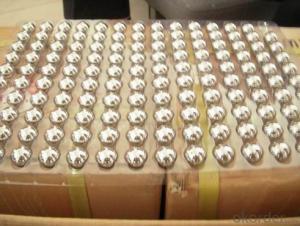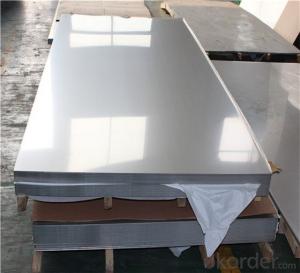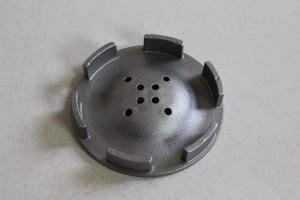Stainless Steel Chimney Liner
Stainless Steel Chimney Liner Related Searches
Best Paint For Stainless Steel Blanket Insulation For Steel Buildings Primer For Galvanized Steel Foam Filter For Stainless Steel H S Code For Stainless Steel Surface Grinding Wheels For Stainless Steel Surface Grinding Wheels For Hardened Steel Hole Saw For Stainless Steel Paint For Stainless Steel Stainless Steel For BbqHot Searches
Steel Mesh Panels For Sale Price For Stainless Steel Scrap Scrap Price For Stainless Steel Price For Stainless Steel Stainless Steel Tank For Sale Stainless Steel Sheets For Sale Cheap High Tea Sets For Sale Stainless Steel Tanks For Sale Stainless Steel For Sale High Density Fiberboard For Sale Solar Hot Water Collectors For Sale Scaffolding For Sale In Uae Scaffolding For Sale In Ireland Scaffolding For Sale In Houston Type Of Inverter For Solar Price Of Shipping Containers For Sale Types Of Inverter For Solar Stock Price For Aluminum Used Solar Inverter For Sale Steel Mesh Panels For SaleStainless Steel Chimney Liner Supplier & Manufacturer from China
Okorder.com is a professional Stainless Steel Chimney Liner supplier & manufacturer, offers integrated one-stop services including real-time quoting and online cargo tracking. We are funded by CNBM Group, a Fortune 500 enterprise and the largest Stainless Steel Chimney Liner firm in China.Hot Products
FAQ
- To prevent galvanic corrosion in stainless steel pipes, it is crucial to avoid direct contact with dissimilar metals. This can be achieved by using appropriate insulation or protective coatings on the pipes, ensuring that they do not come into contact with materials such as copper or aluminum. Additionally, employing dielectric unions or isolating gaskets at the connection points can help to minimize the risk of galvanic corrosion. Regular maintenance, including inspection and cleaning, is also essential to identify and address any potential issues before they escalate.
- Yes, stainless steel pipes can be used for heat exchangers. Stainless steel is a popular choice for heat exchangers due to its high resistance to corrosion, durability, and excellent heat transfer properties. It can withstand high temperatures and pressure, making it suitable for various applications in industries such as chemical, food processing, and power generation.
- Yes, stainless steel pipes can be used for air pollution control systems. Stainless steel is a highly durable and corrosion-resistant material, making it suitable for handling harsh environments and corrosive gases that are commonly found in air pollution control systems. Stainless steel pipes also have the advantage of being able to withstand high temperatures, allowing them to be used in applications where thermal resistance is required. Additionally, stainless steel is known for its hygiene properties, making it an ideal choice for industries that require clean and sterile air handling. Overall, stainless steel pipes are a popular and reliable choice for air pollution control systems due to their strength, durability, corrosion resistance, and ability to handle high temperatures.
- The main difference between 304 and 304H stainless steel pipes lies in their carbon content. While both materials are made up of the same elements, including iron, chromium, and nickel, 304H stainless steel contains a higher carbon content compared to 304 stainless steel. The increased carbon content in 304H provides improved high-temperature strength and creep resistance, making it more suitable for applications that involve elevated temperatures. Because of its higher carbon content, 304H stainless steel pipes have better resistance to sensitization during welding, which is the formation of chromium carbides at the grain boundaries. This can lead to intergranular corrosion and reduced mechanical properties. By incorporating a higher carbon content, 304H stainless steel pipes can resist this sensitization phenomenon and maintain their structural integrity even at high temperatures. In terms of other properties, both 304 and 304H stainless steel pipes offer excellent corrosion resistance, good weldability, and high strength. They are widely used in various industries such as oil and gas, chemical, food processing, and pharmaceuticals. However, it is important to note that 304H stainless steel pipes are typically recommended for applications requiring high-temperature strength, while 304 stainless steel pipes are more commonly used for general-purpose applications. In summary, the difference between 304 and 304H stainless steel pipes lies in their carbon content. 304H stainless steel pipes have a higher carbon content, providing improved high-temperature strength and resistance to sensitization during welding. It is important to consider these differences when selecting the appropriate stainless steel pipe for a specific application.
- 304 stainless steel pipe, 20*2 pressure, how many kilograms?
- 304 is a versatile stainless steel which is widely used in the manufacture of equipment and parts requiring good overall performance (corrosion resistance and formability).
- Polyethylene can indeed be used to line stainless steel pipes. It is a widespread practice in numerous industries, such as oil and gas, chemical processing, and water distribution. The utilization of polyethylene lining brings forth numerous advantages, including corrosion resistance, enhanced flow capacity, decreased friction, and improved chemical resistance. The process itself entails the insertion of a polyethylene liner into the stainless steel pipe, followed by heating and expanding it to achieve a secure fit. This lining method effectively shields the stainless steel pipes against corrosion and prolongs their durability.
- The maximum pressure that stainless steel pipes can handle depends on various factors such as the grade of stainless steel, the wall thickness of the pipe, and the specific application. Generally, stainless steel pipes have high resistance to pressure, making them suitable for various industrial applications. Stainless steel pipes are available in different grades, such as 304, 316, and 321, each with its own maximum pressure rating. For instance, grade 304 stainless steel pipes can typically handle pressures up to 870 psi (pounds per square inch), while grade 316 stainless steel pipes can handle pressures up to 1,500 psi. It is important to note that the wall thickness of the pipe also plays a significant role in determining its maximum pressure handling capacity. Thicker-walled pipes can generally handle higher pressures than thinner-walled pipes. Additionally, the specific application and the conditions under which the stainless steel pipes are used can impact their maximum pressure capacity. Factors like temperature, corrosive substances, and external forces should be considered to ensure the pipes can withstand the intended pressure. To determine the maximum pressure that stainless steel pipes can handle for a specific application, it is recommended to consult with a qualified engineer or refer to industry standards and guidelines, such as those provided by the American Society of Mechanical Engineers (ASME) or the International Organization for Standardization (ISO). These resources provide detailed information on pressure ratings and specifications for different grades and sizes of stainless steel pipes.
- 304L stainless steel pipe can withstand 0.1MPA?
- Stainless steel pipe is a kind of hollow long strip round steel, mainly used in petroleum, chemical, medical, food, light industry, machinery, instrument and other industrial pipeline and mechanical structure parts. In addition, the bending and torsional strength of the same weight is lighter, so it is also widely used in the manufacture of mechanical parts and engineering structures. It is also used to produce all kinds of conventional weapons, guns, shells and so on.













































